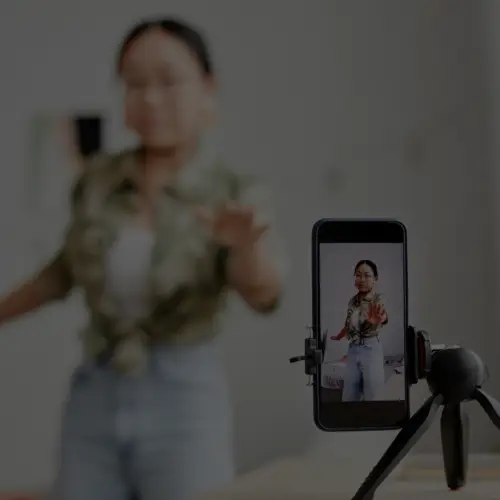
31 Aug Predictions Revisited: Five Not-Too-Distant Technologies That Might Change Social Media
Six years ago, I published the post “Five Not-Too-Distant Technologies that Might Change Social Media.” In the summary I projected that “all of these [technologies] are probably 5-10 years out and, admittedly, I have a large imagination.” Seeing as we’ve surpassed the 5-year mark, I wanted to see how it shook out and how accurate each of my predictions were and, also, add something in that I missed.
Augmented Reality
Augmented reality was HUGE when I wrote this post. It was one of the top buzzwords, only to fall off around 2013. With the release of Pokemon Go in 2016 there was a light revival of sorts but it has, otherwise, remained out of the trendy discourse.
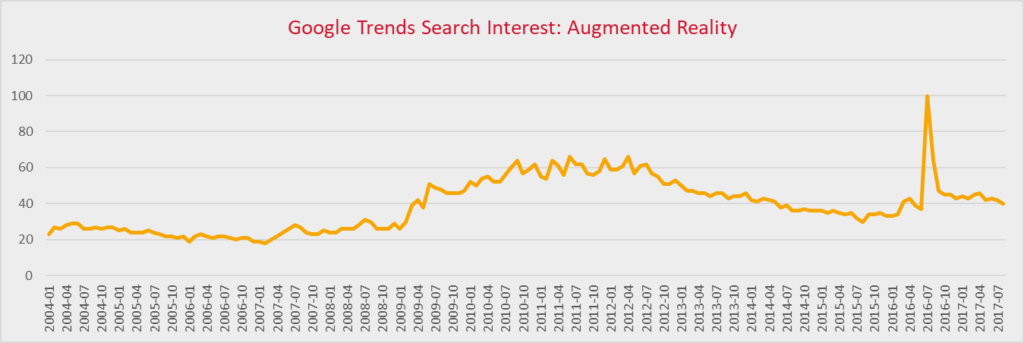
Just because it’s not as shiny as it was back in 2011/2012 doesn’t mean we should write it off. One thing I’ve noticed with certain tech trends is that they’ll form a hype bubble and then fade into obscurity. Starting out ahead of their time only to return later as something bigger and better. Take podcasting for example. Podcasts were a thing back in 2005, receiving some initial popularity, only to fade away from the general public’s eye. Eventually iPods became less of a thing as smartphone capabilities grew and Serial skyrocketed to popular acclaim. Now, listening to podcasts is a major cultural activity, spanning demographics. Edison Research reported “six in ten Americans are now familiar with the term ‘podcasting’, a number that has risen 22% in two years.”
Another, similar example is virtual reality. In 2006 Second Life was set to be the next big thing. IBM bought property in it and American Apparel opened a shop in the platform only to close it a year later. This massive cultural phenomenon exploded quickly and fading just as fast. Now more affordable technology exists to make virtual worlds even more immersive than Second Life ever was thanks to products like Oculus Rift. The technology is here to stay and will only grow more popular as the hardware becomes more affordable and is used for applications outside of gaming.
All that to say that augmented reality will swing back. We saw a glimpse of that with Pokemon Go, but Google is taking a new approach to Glass and Snapchat released their lenses which means Instagram will probably copy that too. Google also just announced a new software development kit, ARCore which will allow developers to start experimenting with augmented reality on Android.
Prediction Accuracy Rating: Inconclusive. It’s not dead yet and I have a feeling some killer app is going to skyrocket the technology into a mainstream fad (aside from Pokemon Go). My ultimate guess is that its popularity will be contingent on “normal” looking hardware (i.e., contacts or glasses that don’t make you look like a cyborg).
Wearable Technology
The next prediction was that wearable technology would become mainstream; however, it didn’t take off in the way I expected. My initial hypothesis honed in on the specific use case of making the world your screen by projecting information onto your surroundings. Reflecting on this now, I was really blown away by Pranav Mistry’s SixthSense device at the time and blind to the other potential use-cases which would appear a few years later. Fitness trackers really didn’t become a fad until late 2013.
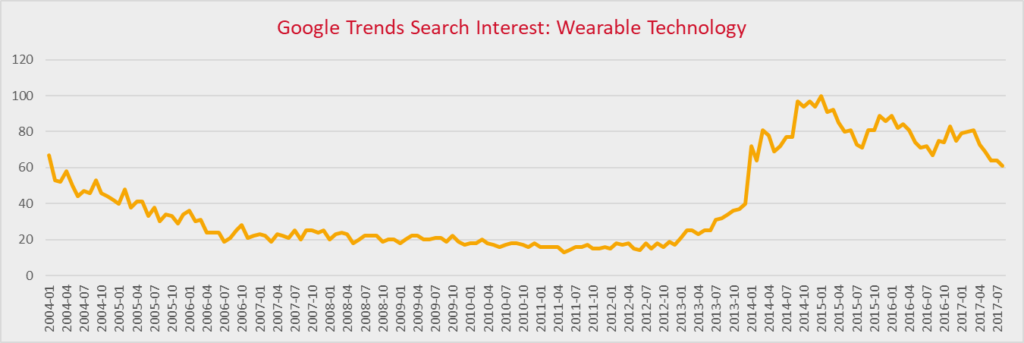
Wearable tech became a thing within the time-period I anticipated; however, it did not at all represent the assumptions I made. Curious to see what Pranav got up to after SixthSense didn’t quite take off, I traveled to Wikipedialand unsurprised to learn he lead the Think Tank team at Samsung that developed Galaxy Gear.
Prediction Accuracy Rating: In terms of prediction specifics, I failed. In terms of general concept, the pieces were there. Wearable tech did blow up a few years after the projection and Pranav Mistry was involved.
Brain-Computer Interfaces
Of the projections I outlined in the initial post, I was most excited about this one. At the time of the post, several companies were emerging to focus on brain-computer interfaces (BCI). The technology extracts monitors brain activity and can be used for wellness, consumer insights, research, and even controlling things (a major use-case for people lacking mobility). There were two companies I cited in the previous posts, Emotiv and NeuroSky. Neither company appears to have gone beyond the niche they were in 6 years ago.
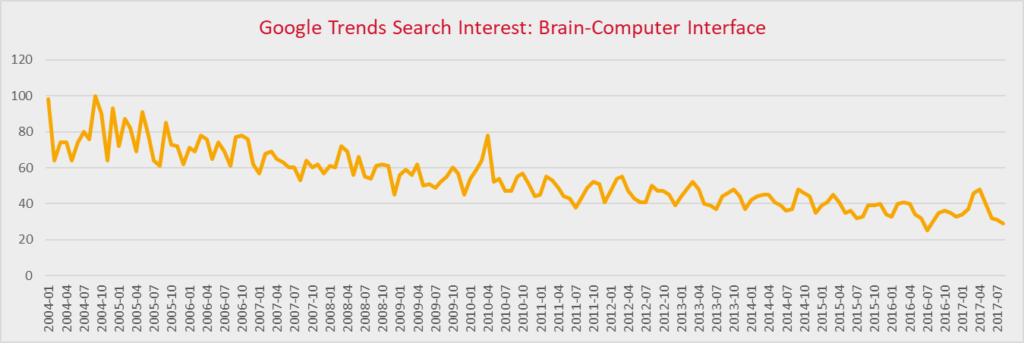
I’m not giving up on the idea of this technology becoming a trend yet, though. I’m going to give it another 5 years because Facebook’s R&D division, Building 8, is currently working on something, as revealed earlier this year at the F8 conference.
It also doesn’t hurt that DARPA is working on the technology as well; however, they are going the neural implant route. Voluntarily adding chips to your brain is a bit of a high barrier to entry though.
Prediction Accuracy Rating: To Be Determined. Lame. I know. Hurry up technology!
Holographic Projection
Here’s another on that hasn’t yet been realized by a mainstream trend, except for brief blips when a dead musician hits the stage like Tupac did in 2012, but I’m going to give it another 10 years. Red, a company that specializes in really high-end, professional cameras (no seriously, these cameras were used in Guardians of the Galaxy Vol. 2), announced they are releasing a $1k+ smartphone next year billed as “The world’s first holographic media machine”. There’s no way this model is going to break holographic projection into the mainstream; however, it will likely give the public a taste, thus inspiring a second or third generation of more-affordable and more-accessible devices.
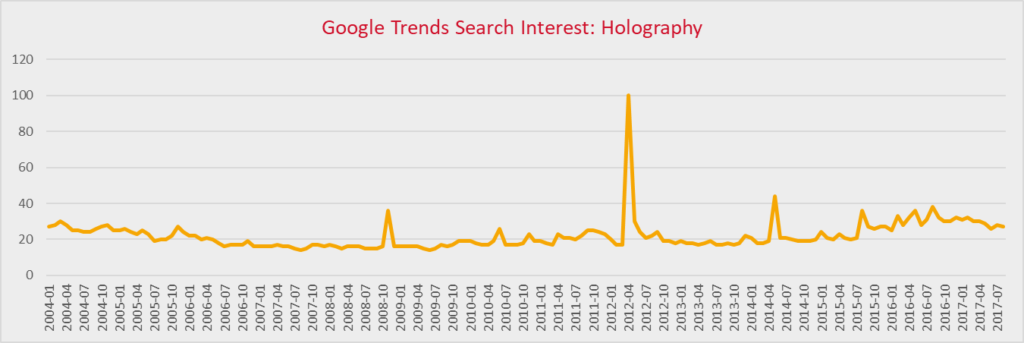
For now, though, we’re stuck with a holographic Ronnie James Dio tour. I mean, just look at how excited that audience is…
Prediction Accuracy Rating: To Be Determined.
Omnipresent Interactive Surfaces
There really isn’t much to say here. We have smart refrigerators but I’m not sure we can say interactive surfaces are omnipresent – something that is likely a long way off.
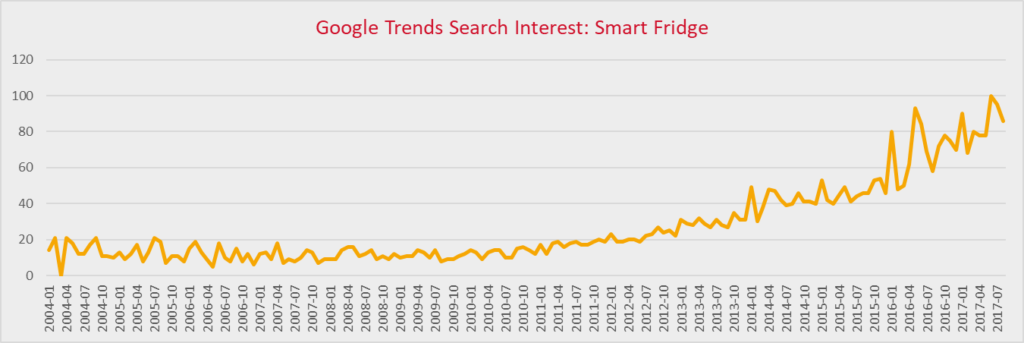
Prediction Accuracy Rating: It’s here, but not really. Let’s give it 20 more years until ‘omnipresent’ is a more-accurate descriptor.

From Silicon Valley Season 4 Episode 7
Addition to the list: Artificial Intelligence
Facebook’s relationship with A.I. made the news recently after the Facebook AI Research lab (FAIR) pulled the plug on chatbots that developed a new language on their own. This reignited the conversation of some terminator style robot uprising. Elon Musk is not a fan, cautioning the world. All of this is terrifying until you realize there was nothing nefarious going on at Facebook, they pulled the plug because they wanted to develop bots that communicate with people, not each other.
Our most prevalent encounters with A.I. come in the form of our digital assistants: Cortana, Siri, Alexa, Google. To say A.I. will destroy humanity is a lot like saying the internet is making us stupid. It’s not the technology that is the issue, it’s how the technology is being used within our culture. Stephen Hawking sees it as a potential danger; however, it could be harnessed for good if properly utilized.
Search interest of “Artificial Intelligence” has waned since 2004, though it is currently on an upward trajectory that started around 2013. Low hanging fruit with this prediction, but I expect we’ll see A.I. work its way into aspects of business we otherwise didn’t expect as the technology develops and machine learning becomes more efficient.
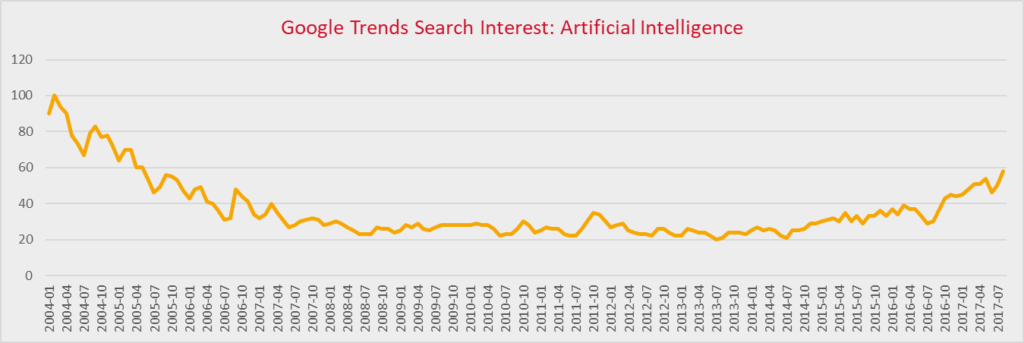
In Summary
A lot has changed the last five years. The speed at which technological progress is occurring is light years ahead of growth centuries ago, but will likely be laughable in 2200. The world of social media will look drastically different then, but at Ignite Social Media we’re always learning and adapting. Visit our services page to see how we can help your company do the same.





